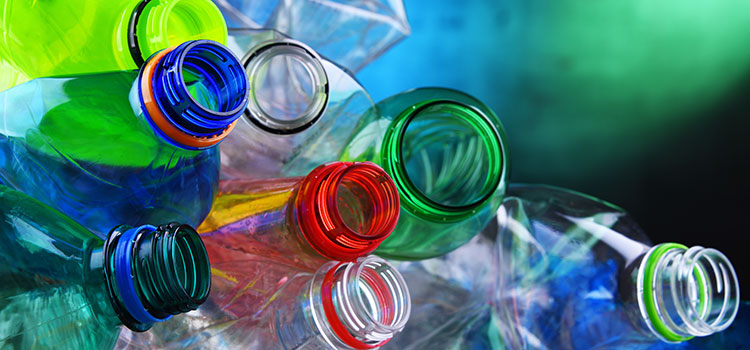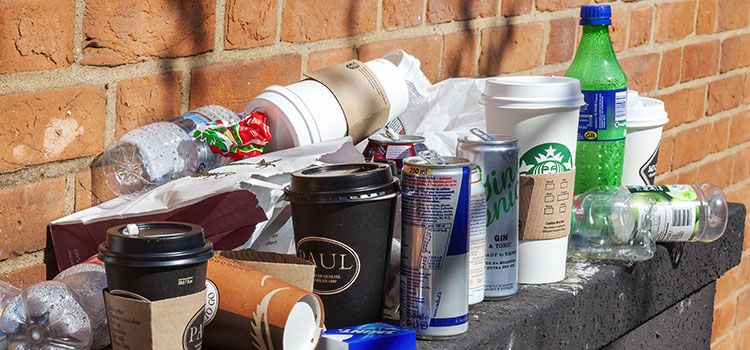Government and the devolved administrations are working with stakeholders to design one of the most critical parts of the Extended Producer Responsibility (EPR) regime, set to be implemented in 2023.
Specific working groups will be developing modulated fees – a system that encourages more sustainable material use via cost gradation - in order to incentivise producers to implement more recyclable packaging.
Defra and its counterparts in Wales, Scotland and Northern Ireland will collaborate with the Industry Council for Packaging and the Environment (INCPEN), the Food and Drink Federation (FDF) and the British Retail Consortium (BRC) to create a working model for modulated fees, which could be then be used by an anticipated scheme administrator to implement the policy.
Two phases are expected to be completed by the end of April 2021:
Phase 1: Develop a list of packaging categories for glass, metals, paper/board, plastics and wood that covers all in-scope packaging under EPR.
Phase 2: Assess the range of modulation mechanisms that could reward companies with good behaviours – for example, recyclability; and low littering rates of packaging.
More comprehensive reporting
Although reporting under the current packaging regulations is fairly rigorous, it’s probable that producers will have to undertake even more comprehensive reporting in line with these new categories, when they are eventually implemented.
The groupings are likely to be set with their manufacturing efficiency, sustainability and end of life recyclability in mind. Producers will then be expected to report the packaging they place on the market in line with these, alongside some key features of the product.

Taking rigid plastic bottles as an example, the producer may be expected to list the polymer type (e.g HDPE, PE, PET etc) and the colour. This information will be rated in terms of recyclability for instance, with the fees set accordingly.
A key task here will be creating a list detailed enough to enable the delivery of EPR, without inserting so much detail that the list is unwieldy or overly technical. The four Governments will need to be satisfied that the intended outcomes of the EPR policy regime are achievable through the categories that are offered.
Defining the modulation mechanisms
A remaining third phase is expected to take place by July 2021:
Phase 3: assess the packaging categories and modulation mechanisms to ensure they deliver the intended EPR behaviours and outcomes desired by the four governments
It is currently unclear how the modulation criteria will be set. For instance, if the proportion of recyclable material contained in a composite item of packaging will affect the fee modulation, will this be calculated in line with other policies such as the plastic packaging tax, where the predominant material dictates the packaging category?
These details will need to be ironed out, but the core principle remains, that the fees need to be set to adequately cover the full net cost for managing packaging waste, without overly burdening producers.

Paul Vanston, CEO of INCPEN, stated on this matter that “we want to create a UK-wide producer responsibility system that stands the tests of time for the next 25 years. That means EPR must be financially sustainable for all stakeholders, including producers.”
One thing we do know is that the administration of modulated fees will be necessarily complicated. The current producer responsibility framework operates on a shared responsibility basis, which will likely change if modulation is implemented in 2023. European case studies show that a single point of compliance is the much preferred choice for gradated EPR fees, and allays the risk of over-complication in a shared compliance scenario.
What producers can expect in the future
2021 will be a busy year in shaping EPR, commencing with the anticipated launch of a public consultation by Defra in the first quarter of the year. Defra will look for feedback from key stakeholders and will then release further details of the scheme. We will of course be communicating about and responding to this consultation when it occurs.

In general, producers of packaging should expect to provide much more thorough data concerning their products, alongside unavoidably increased payments. Furthermore, thinking about the recyclability and material use of packaging products would be wise, as we already know that less sustainable materials will certainly attract higher fees. Hard to recycle plastics, such as polyvinyl chloride and polystyrene, for instance, will undoubtedly draw the highest costs.
A move toward a single point of compliance is also a distinct possibility, indeed the first consultation stated this was the ‘preferred option’, although whether this actually happens and how it will work will not be clear until further information is released.
If you have any questions or specific concerns about the impact of future packaging producer responsibility on your organisation, please do contact our team.

Louisa Goodfellow
Policy Manager
As Policy advisor Louisa provides key support to our team, including preparing reports on environmental policy issues and maintaining awareness of new developments. As such she will often be found coordinating responses to policy consultations, advocating policy positions and providing internal guidance to current legislation.

Latest News

Q2 2024 recycling data shows strong performance in H1
By Sam Marshall 24 Jul 2024
Ecosurety continue to step up for refill and reuse
By Victoria Baker 24 Jun 2024
Ecosurety renews B Corp™ certification with flying colours
By Louise Shellard 11 Jun 2024
Ecosurety sponsor the 2024 Carbon Literate Organisation Awards
By Louise Shellard 07 Jun 2024
